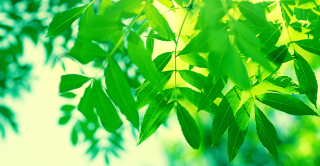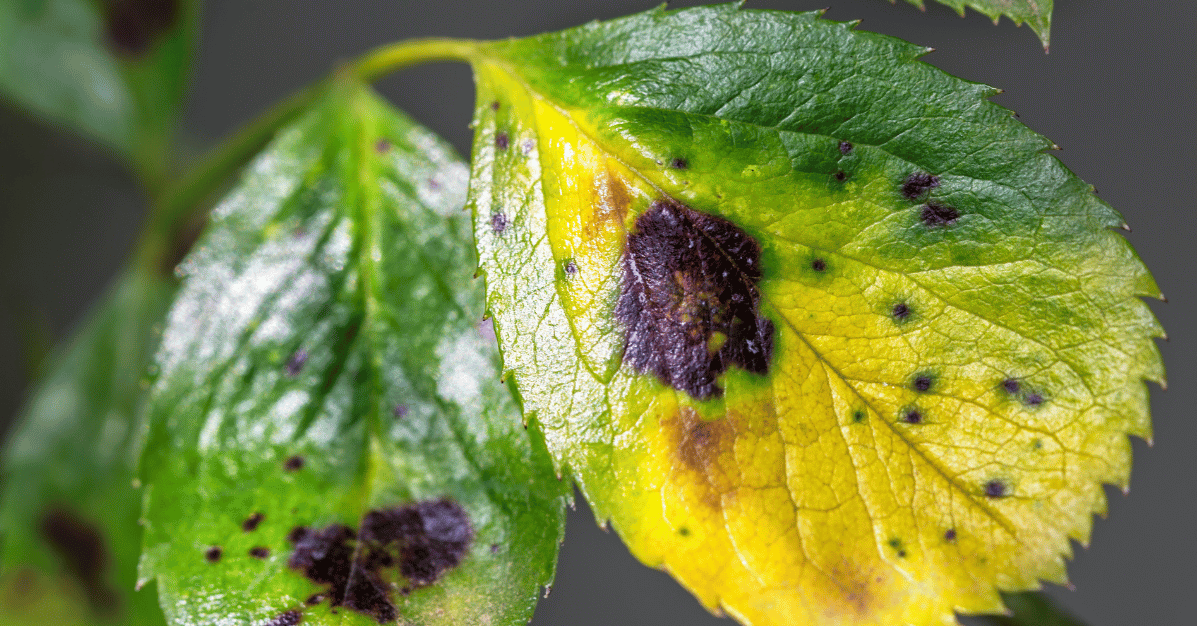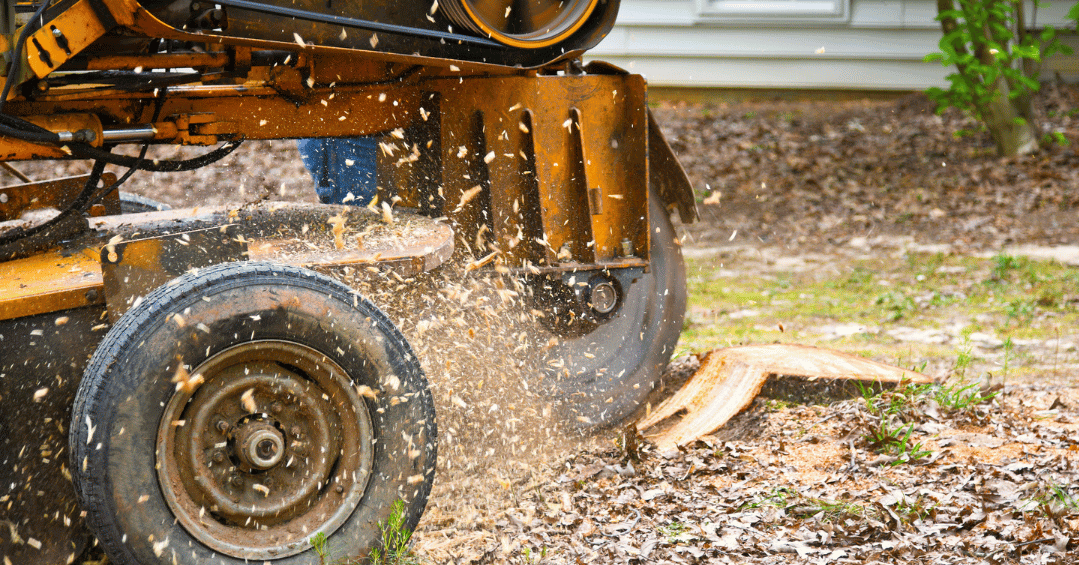Did you know that over 100 million ash trees have called North America home, but in the past two decades, that number has plummeted by a staggering 50%? As an arborist at Strobert Tree Services, I spend my days knee-deep in nature, identifying tree health hazards and ensuring they thrive. The more people recognize an ash tree, the more we can advocate for their protection and restoration. This article will discuss ash tree leaves, bark, and typical characteristics of the most common species.
Do You Have an Ash Tree?
Understanding the trees that grace your property adds aesthetic value and aids in their proper care and maintenance. Recognizing ash trees involves observing key features, particularly their leaves and bark.
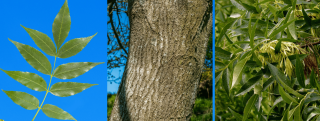
• Leaf Check: Look for compound leaves with 5 to 9 leaflets arranged in pairs, like a friendly handshake. Each leaflet should be oval-shaped with a pointed tip and delicate sawtooth edges.
• Branches: Watch for opposite branching, where branches sprout across from each other like playful twins. This symmetry adds to the graceful charm of an ash.
• Bark Tells a Story: Young trees have smooth, gray-brown bark, but mature ash trees boast diamond-shaped ridges, like a secret code etched by time.
Species of Ash Trees
Common Ash Tree Species
To refine your identification skills, it's beneficial to familiarize yourself with some prevalent ash tree species. The most common types include:
White Ash (Fraxinus americana)
Known for its light-colored bark and a preference for moist soils, the white ash is a majestic tree that can reach towering heights. Its compound leaves and distinctive diamond-shaped bark make it easily recognizable.
Green Ash (Fraxinus pennsylvanica)
Green ash is a hardy species with a more adaptable nature and a tolerance for various soil conditions. Its leaves are similar to the white ash's, but the green ash tends to have slightly smaller leaflets.
Black Ash (Fraxinus nigra)
Thriving in wetter environments, the black ash is distinguishable by its narrow leaflets and dark, furrowed bark. This species is often found in swampy areas and is valued for its wood in some regions.
Lower Classifications Ash Tree Species
European Ash (Fraxinus excelsior)
European ash, known scientifically as Fraxinus excelsior, is a majestic tree native to Europe. Its tall stature, distinctive diamond-shaped leaves, and grayish-brown bark make it a popular choice for landscaping.
Fraxinus Ornus
Also known as Manna ash, Fraxinus ornus is native to southern Europe. Its claim to fame lies in the sweet sap, or "manna," from its bark. This unique feature has historical significance, as manna has been used in traditional medicine and as a sweetener.
Griffith's Ash (Fraxinus velutina)
Griffith's ash is also known as Arizona ash and is native to the southwestern United States. It's deciduous nature and vibrant green leaves make it a sought-after choice for ornamental purposes in arid regions.
Oregon Ash (Fraxinus latifolia)
Standard in the Pacific Northwest, Oregon ash is well-adapted to wet habitats. Its compound leaves and winged seeds add to its visual appeal, making it a valuable component of riparian ecosystems.
Fraxinus Mandshurica
Native to East Asia, Fraxinus mandshurica, or Manchurian ash, is recognized for its robust wood and resistance to pests. It is a hardy tree with compound leaves that turn vibrant shades of yellow in the fall.
Blue Ash (Fraxinus profunda)
Blue ash is a North American species known for its unique bluish-gray bark. It is distinguishable from other ashes by its squared stems and is found in various habitats, from upland woods to floodplains.
Fraxinus Albicans
Fraxinus albicans, or Texas white ash, is native to the southwestern United States. Its smooth, pale bark and compound leaves make it attractive for landscaping in arid and semi-arid regions.
Fraxinus Caroliniana
Carolina ash, native to the southeastern United States, is characterized by its compound leaves and preference for moist soils. It adds a touch of elegance to landscapes and is often used for shade in parks and gardens.
California Ash (Fraxinus dipetala)
Found in California and Oregon, California ash is known for its fragrant white flowers and compound leaves. Its preference for riparian habitats makes it a valuable tree for stabilizing stream banks.
Single-leaf Ash (Fraxinus dimorpha)
Endemic to the southwestern United States, the single-leaf ash stands out with its single, elongated leaflets. It thrives in rocky habitats and contributes to the unique biodiversity of its native regions.
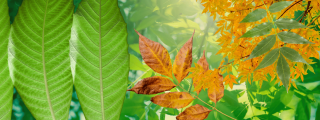
Identifying Ash Tree Leaves
One of the primary characteristics that distinguish ash trees is their distinct leaves. Understanding the features of ash tree leaves is crucial for accurate identification.
Leaf Arrangement:
Ash tree leaves are arranged in a compound pattern. This means that multiple leaflets share a single stem, forming a leaf structure with a more complex appearance. Each compound leaf consists of several leaflets, typically arranged opposite each other along the stem.
Leaf Structure:
The individual leaflets of an ash tree are elongated and serrated along the edges. These serrations can vary in size and depth, providing a unique texture to the leaves. The overall leaf structure gives an ash tree a graceful and balanced appearance.
Leaf Color:
Ash tree leaves have a distinctive color, ranging from deep green to blue-green. The color can vary slightly between different ash species, but generally, the leaves have a vibrant and healthy green hue during the growing season. Observing the color variations can be a helpful clue when identifying ash trees.
Leaf Size:
The size of ash tree leaves can vary depending on the specific species. However, most ash tree leaves are medium to large, with individual leaflets ranging from 2 to 6 inches long. Paying attention to the size of the leaves can aid in narrowing down the possibilities when identifying ash trees in a specific region.
Characteristics of Ash Tree Bark
While leaves are a primary identifier, examining the bark of ash trees provides additional details for accurate identification.
Bark Texture:
Ash tree bark is distinctive, with a pronounced diamond-shaped pattern. The diamond shapes are formed by intersecting ridges that create a unique texture. This feature sets ash trees apart from many other species, making it easier to identify them even from a distance.
Bark Color:
The color of ash tree bark evolves as the tree matures. Young ash trees typically have smooth and light-gray bark. As the tree ages, the bark becomes darker and develops furrows and ridges. This aging process can be a valuable clue in determining the approximate age of an ash tree.
Bark Patterns:
In addition to the diamond-shaped pattern, ash tree bark often exhibits vertical fissures as it matures. These vertical lines add to the overall texture of the bark and help distinguish ash trees from other tree varieties with similar diamond patterns.
Presence of Lenticels:
Lenticels are small, porous openings on the bark that allow the tree to exchange gases with the surrounding environment. Ash trees have characteristic corky, raised lenticels that contribute to the overall texture of the bark. Identifying these unique features can aid in confirming the presence of an ash tree.
Threats to the Ash Tree: Emerald Ash Borer
Despite their iconic presence, ash trees face significant threats, primarily from the invasive emerald ash borer (Agrilus planipennis). This metallic green beetle, native to Asia, has wreaked havoc on ash tree populations in North America since its accidental introduction.
The emerald ash borer larvae tunnel beneath the bark, disrupts the tree's nutrient flow, and causes irreversible damage. Infested ash trees often exhibit thinning canopies, D-shaped exit holes in the bark, and increased woodpecker activity as they feed on the larvae.
Signs of Infestation
To protect ash trees from the emerald ash borer, it is crucial to be vigilant for early signs of infestation. Watch for unusual dieback in the canopy, bark splitting, or unusual woodpecker activity. If you notice these signs, you must seek professional assistance promptly.
Prevention and Treatment
Preventing emerald ash borer infestation involves implementing preventive measures and treatments. Strobert Tree Services specializes in identifying and treating pest-related issues in trees. Our certified arborists can assess the health of your ash trees and recommend appropriate remedies to safeguard them from the emerald ash borer.
Contact Strobert Tree Services
At Strobert Tree Services, we take pride in being leaders in tree care across Delaware, Pennsylvania, Maryland, and New Jersey. Please contact us if you need assistance identifying ash trees or any other tree-related services. Our team of skilled arborists is ready to provide expert guidance, whether identifying tree species, diagnosing tree health issues, or offering professional tree care services.
Recognizing ash trees is a valuable skill that enhances our understanding and appreciation of the diverse tree species in our environment. By focusing on the distinctive features of ash tree leaves and bark, you can confidently identify these trees in your surroundings. Strobert Tree Services is dedicated to promoting tree care awareness and providing expert services to ensure the health and longevity of our valuable green companions.


